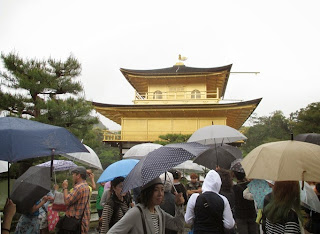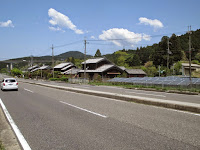My
Tokaido Walk is in the final stage. I walked from Kusatsu, the 52nd
shukuba station, to Otsu, the 53rd station, today.
Tokaido
and Nakasendo, which also connected Edo (Tokyo) and Kyoto through mountain
areas, met at Kusatsu. I found a monument at the meeting point of the two
ancient roads.
There is a tunnel at the side of the monument. The tunnel goes under the old Kusatsu River.
It was a raised-bed river. People sometimes had flood disasters in
the Edo era and they made tunnels under the river after the Meiji period.
The
tunnels remain at several places in the city. (see Tokaido Walk 31).
A
new artificial river was constructed and the old river is now dried up. I found old people playing gateball in the riverfield when I passed the new river.
An old honjin or main inn remains in the shukuba of Kusatsu. The city plans to renew the area and to add new information services there to attract tourists. It is also scheduled to take off all electric poles from the district in years.
I walked into Otsu city and arrived at the Seta River. The river flows out of Lake Biwa, changes the name (of the
river) to Uji iver and the Yodo River, then pours into Osaka Bay. More
then 800 rivers flow into Lake Biwa and only the Seta River goes out.
The
bridge over the river is called “Seta-no-Karahashi” and has been famous from the
ancient era as its geographical importance.
There
were many boat teams practicing. The river was blue. The scene looked beautiful
and peaceful. (top photo)
I
felt algae-like smell at the same time. The lake had a lot of algae in the summer time and the
“pollution” became a big issue decades ago. The situation has been improved, but
they still have the algae smell in summer.
The
site of the old Zeze Castle is now converted into a park. It locates at the
side of Lake Biwa. Families enjoyed their holidays.
The
site of the old Otsu Castle is now used as a port.
The fountain shows are
played several times every day. I enjoyed one of them. There are many new
apartment houses build around the lake in the area.
I
also visited the Mii-dera Temple, the head of Tnedai Jimon sect. The scene of Lake Biwa from the temple was beautiful.














IMG_4203.JPG)

















.JPG)
.JPG)














.JPG)



